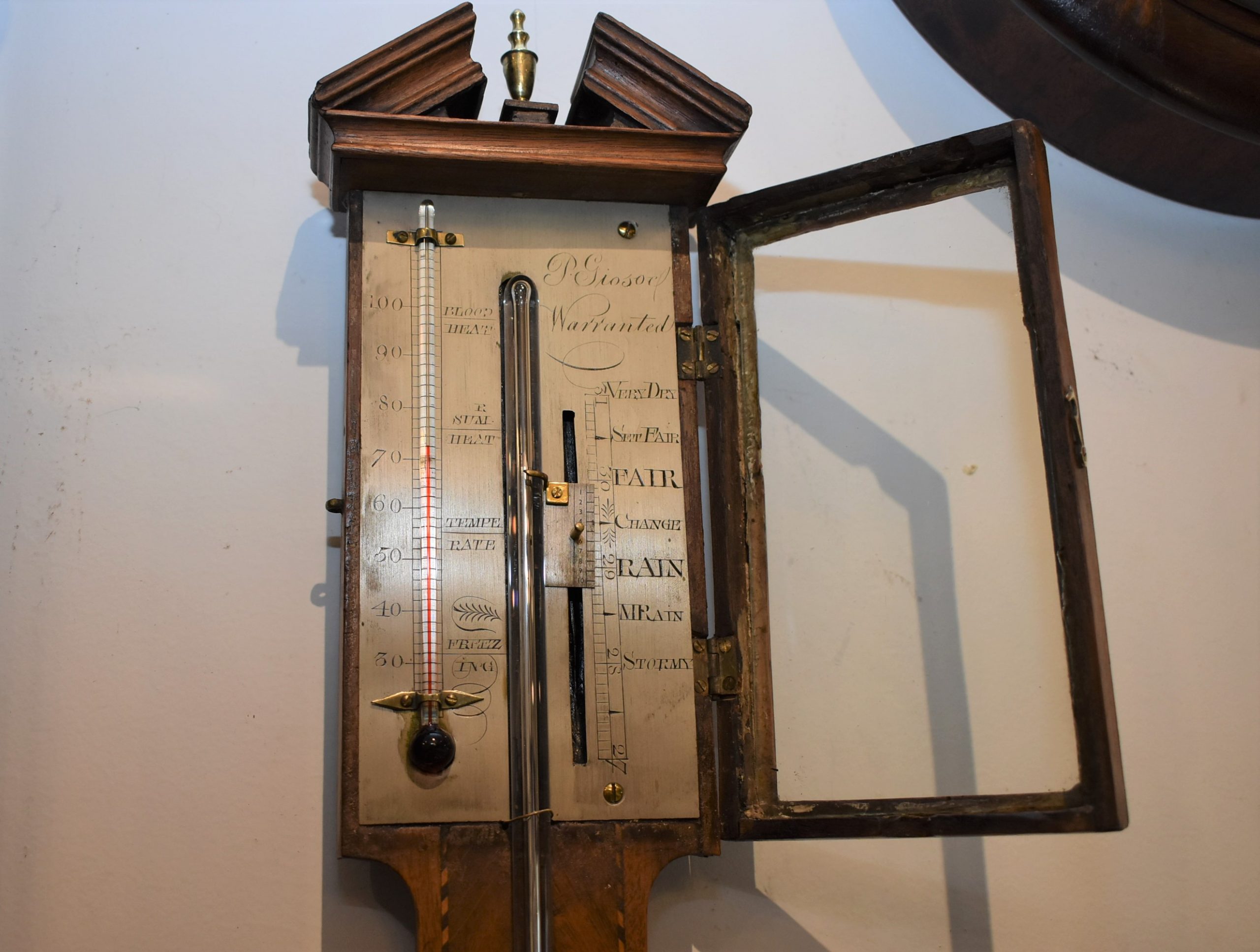Antique clocks and barometers have a unique appeal, not only because of their vintage design but also due to their innovative functionality that has stood the test of time. Two such fascinating devices are the Stick Barometer and the Aneroid Barometer. Both devices serve the same purpose of measuring atmospheric pressure, but they differ in structure, design, and working mechanism. In this article, we delve into the intriguing world of barometers and explore the similarities and differences between these two remarkable weather instruments.
Stick Barometer
The stick barometer, also known as a mercury barometer or a Torricellian barometer, dates back to 1643 and is attributed to the Italian scientist Evangelista Torricelli. The traditional stick barometer contains a straight glass tube, partially filled with mercury, with the open end immersed in a reservoir of mercury. As atmospheric pressure changes, it exerts force on the mercury in the reservoir, causing the mercury level in the tube to rise or fall accordingly.

One of the appealing aspects of stick barometers, especially for antique enthusiasts, is their visually engaging operation. The rising and falling of mercury provides a clear and tangible demonstration of the atmospheric changes. This liquid interaction within a delicately crafted glass tube epitomizes the blend of science and art.
Aneroid Barometer
In contrast, the aneroid barometer represents a later, more compact and portable advancement in barometric technology. Invented by French scientist Lucien Vidie in 1844, it operates without liquid. The term ‘aneroid’ means ‘without liquid’. Inside an aneroid barometer is a small, flexible metal box, known as an aneroid cell, which expands or contracts with changes in atmospheric pressure. This change is mechanically amplified and shown on a dial – a different, but equally captivating spectacle.
Aneroid barometers are typically smaller, more portable, and easier to maintain than their stick counterparts. Their intricate inner workings, with miniature gears and linkages, hold a particular allure for those with an appreciation for precise mechanical craftsmanship.

Similarities and Divergence
Both types of barometers share a common purpose: to measure atmospheric pressure and allow forecasting of weather changes. They operate based on the same principle—that atmospheric pressure changes are detectable and measurable. The information these barometers provide can indicate whether to expect clear skies or an approaching storm, a feature that was critical before the advent of modern weather forecasting.
However, their execution of this principle differs. Where the stick barometer uses liquid mechanics, the aneroid barometer employs mechanical action. The stick barometer is a simple, visual device and generally larger, making it an excellent wall-mounted piece for a hallway or study. On the other hand, the more compact aneroid barometer can be housed in a variety of casings, often accompanying a clock or thermometer in a multi-purpose weather station, perfect for desks or smaller spaces.
Whether you favor the liquid interplay in stick barometers or the mechanical elegance of aneroid barometers, these historical weather instruments bear witness to human ingenuity in understanding and interpreting the environment. Each brings its charm, functionality, and unique appeal to a room, just like antique clocks.
In our ever-changing, technology-driven world, the simplicity and authenticity of these barometers remind us of the ingenuity of past inventors and our enduring fascination with the weather. As a lover of antique clocks and barometers, having a deeper understanding of these instruments adds another dimension to your appreciation of these beautiful, functional pieces of history.
